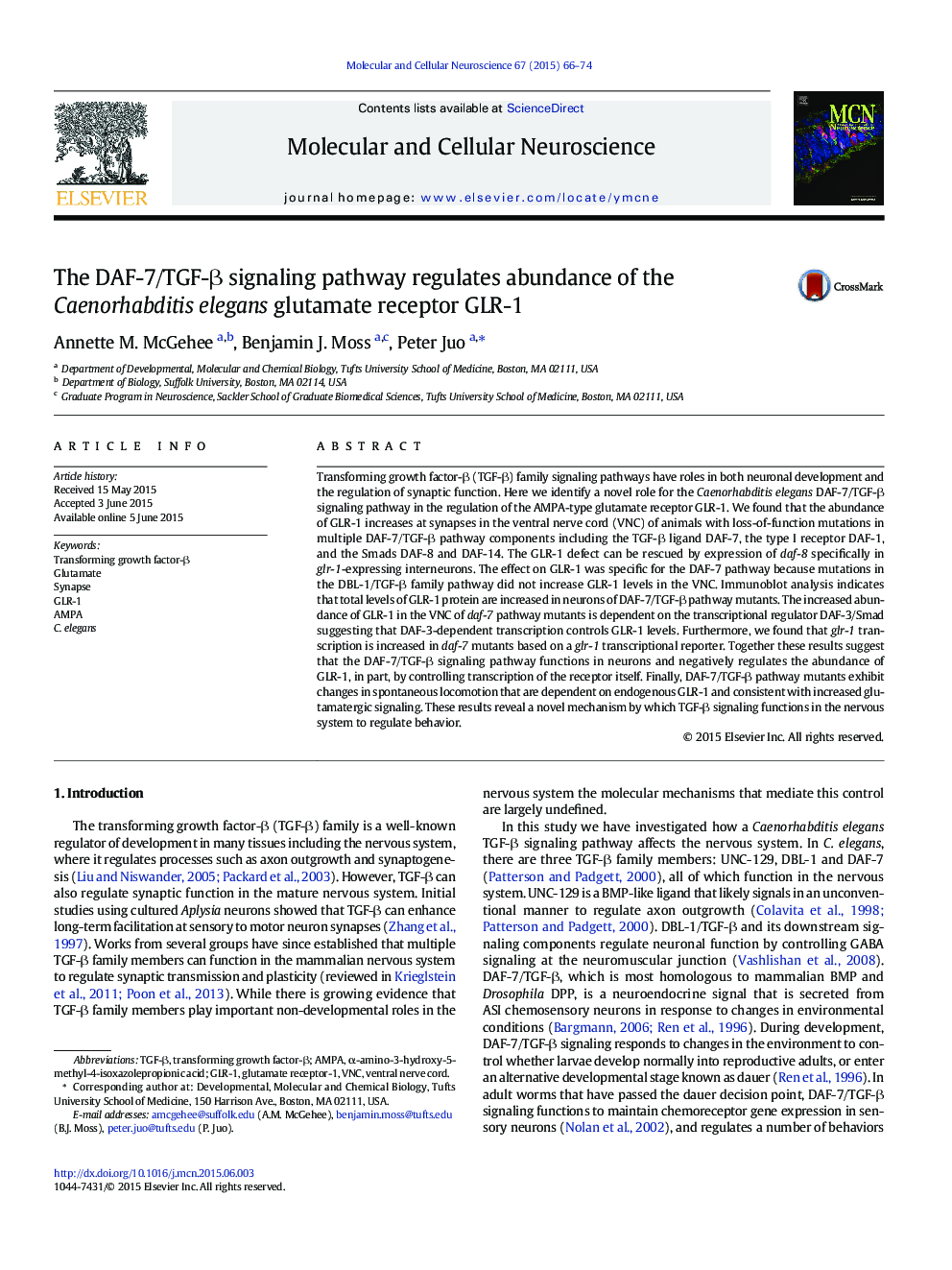| Article ID | Journal | Published Year | Pages | File Type |
|---|---|---|---|---|
| 8478558 | Molecular and Cellular Neuroscience | 2015 | 9 Pages |
Abstract
Transforming growth factor-β (TGF-β) family signaling pathways have roles in both neuronal development and the regulation of synaptic function. Here we identify a novel role for the Caenorhabditis elegans DAF-7/TGF-β signaling pathway in the regulation of the AMPA-type glutamate receptor GLR-1. We found that the abundance of GLR-1 increases at synapses in the ventral nerve cord (VNC) of animals with loss-of-function mutations in multiple DAF-7/TGF-β pathway components including the TGF-β ligand DAF-7, the type I receptor DAF-1, and the Smads DAF-8 and DAF-14. The GLR-1 defect can be rescued by expression of daf-8 specifically in glr-1-expressing interneurons. The effect on GLR-1 was specific for the DAF-7 pathway because mutations in the DBL-1/TGF-β family pathway did not increase GLR-1 levels in the VNC. Immunoblot analysis indicates that total levels of GLR-1 protein are increased in neurons of DAF-7/TGF-β pathway mutants. The increased abundance of GLR-1 in the VNC of daf-7 pathway mutants is dependent on the transcriptional regulator DAF-3/Smad suggesting that DAF-3-dependent transcription controls GLR-1 levels. Furthermore, we found that glr-1 transcription is increased in daf-7 mutants based on a glr-1 transcriptional reporter. Together these results suggest that the DAF-7/TGF-β signaling pathway functions in neurons and negatively regulates the abundance of GLR-1, in part, by controlling transcription of the receptor itself. Finally, DAF-7/TGF-β pathway mutants exhibit changes in spontaneous locomotion that are dependent on endogenous GLR-1 and consistent with increased glutamatergic signaling. These results reveal a novel mechanism by which TGF-β signaling functions in the nervous system to regulate behavior.
Keywords
Related Topics
Life Sciences
Biochemistry, Genetics and Molecular Biology
Cell Biology
Authors
Annette M. McGehee, Benjamin J. Moss, Peter Juo,
